Mexico City Ministry of Health Takes Active Approach to COVID-19

STORY INLINE POST
Q: How is SEDESA promoting healthcare in the city?
A: SEDESA employs an integral healthcare model, which was articulated on primary care attention. We have strengthened areas related to sanitary jurisdictions through health centers and ambulatory attention.
The Ministry’s general program is Salud en tu Vida (Health in Your Life), and from that we derive Salud en tu Casa (Health at Home), Salud en tu Escuela (Health at School) and Barrios y Colonias Saludables (Healthy Boroughs and Neighborhoods). What we offer is integral territorial attention.
Throughout 2019 and 2020, we have accomplished the opening of first-contact health units. We started with 10 units that worked on the weekends and by the end of 2019 we had 150. We are now up to 190. This substantially increases healthcare attention, providing much faster care to those who have no social security.
Sanitary security for all people in the city, regardless of whether or not they have social security, is also very important for SEDESA. This implies providing safe conditions across neighborhoods and the monitoring of open spaces. Our brigades ensure water and food safety but also clean community areas to mitigate sanitary risks in crowded spaces, such as markets. Alongside our municipal governments, we try to address all citizen complaints or notifications regarding any sanitary problem.
We are also working with the city’s Escuelas Saludables (Healthy Schools) program. We have 100 permanent brigades that work at those schools to implement sanitary and health measures. To date, we have 100 schools accredited as Escuela Saludable.
Salud en tu Casa has mainly focused on providing healthcare to people with mobility limitations. In this case, the ministry visits around 70,000 patients each quarter to provide medical attention and guidance.
Q: What did the Ministry learn from hospital visits and initiatives like Hospital Seguro (Safe Hospital) and how did this help to face COVID-19?
A: Hospital Seguro targets safety in the event of an earthquake. We created a protocol to address such events and other natural disasters.
Regarding COVID-19, we started a reconversion of all hospital spaces, determining those that would be used to treat COVID-19 patients and those that would focus on regular patient flows, attention and treatment. The city has five hospitals completely dedicated to COVID-19 and the city’s general hospitals offer hybrid care, as they have been adapted and qualified to attend both COVID-19 patients and regular patients, especially during emergencies. Additionally, we increased the number of beds and ventilators at COVID-19 hospitals.
Q: How is the ministry promoting dental and visual health for citizens in Mexico City?
A: Both of these areas still lack visibility as demand is limited. However, we know this is tied to social conditions that do not allow people to prioritize these ailments. Ninety of the healthcare centers in the city have dental units but service is still limited and mostly focused on prevention, orientation regarding healthy dental habits, emergencies and extractions. There is still no new component of odontology that includes repair or aesthetic surgeries or interventions.
When our administration first arrived and we did a revision of all medical equipment in the city, we realized that almost all equipment was in bad shape or required maintenance, which we have been rectifying. Only half of the health units that we have installed to provide care on the weekends offer dental care, mainly because of the lack of demand which is limited mostly to children, emergencies and toothaches.
We have incorporated visual care at the hospital level. We do not have ophthalmologists in the network but we work side by side with private institutions that offer these services and support us in emergencies and with a cataract program.
Q: What is SEDESA’s approach to mental health?
A: Mental healthcare is available at primary care hospitals, especially at larger health centers. We also have 32 units that offer medical specialties where we provide care and addiction prevention. At the beginning of the year, these were also focused on treating mental health issues. Right before the pandemic, we recruited a significant number of psychologists to strengthen this area. These programs have continued throughout the pandemic, albeit with reduced intensity.
Q: What was SEDESA’s role in the opening of Universidad de la Salud?
A: This was a presidential initiative for Mexico City. SEDESA worked alongside the Ministry of Education, Science, Technology and Innovation to build an educational program for medical and nursing students. It is mainly focused on primary care, training doctors and professionals to understand patients within their different contexts so they can provide better care.
The school has issued its first call for students and after the pandemic, we expect activities to resume. Demand has been high. In fact, the platform for Mexico City had to close because of the number of people participating.
Q: How did SEDESA react to the COVID-19 outbreak in Mexico City?
A: SEDESA began taking action from the first signs of the pandemic in December 2019. When the first case arrived in Mexico, we were quick to alert the population and disseminate information and recommendations on the subject. Throughout the whole process, we have had complete support from the federal Ministry of Health, in particular from the Deputy Ministry for Prevention and Health Promotion. SEDESA was able to track the progress of the disease in Mexico and the global development of the pandemic, which provided us with enough information to formulate a strategy. We implemented a monitoring system and epidemiological vigilance to identify and analyze all data, because, as we have seen, the pandemic has acted differently depending on the particularities of the population. Thanks to this, we were able to implement sanitary protocols at the Mexico City International Airport.
In the beginning, we were able to trace the first cases. The first one was easily identified and monitored through epidemiological vigilance units until the contagion scaled to a local level. Mexico was able to learn from the experience of the countries where the virus hit first and we were able to determine and plan a hospital conversion to face the pandemic. We learned that while many people would not develop symptoms, those who did would have a severe condition that could lead to a collapse of the country’s services if we did not act properly. We were also able to foresee that emergency services were likely to get crowded by people with mild symptoms, while seriously-ill patients would arrive at a very advanced stage. In the city, the Digital Public Innovation Agency contributed greatly by creating a text message option to filter patients with mild symptoms and encourage them to stay home, allowing SEDESA to offer telephone follows-ups and to provide general recommendations of isolation for suspicious cases. This also allowed us to register patients’ addresses to trace the cases and be able to approach them in case of complications.
In Mexico, the serious cases are concentrated among people of 50-60 years of age with morbidities such as hypertension, diabetes or obesity. In the city, 12 out of 100 people suffer from diabetes, 20 out of 100 people over 20 years old suffer from hypertension and 75 percent of the population over 20 years old suffers from overweight or obesity. The text message method also allowed us to identify cases with morbidities to encourage them to go to the hospital or more carefully monitor their symptoms.
Q: What have been the city’s major challenges during the pandemic?
A: Mexico City has a very unequal society. There are people with high living standards and conditions and there are people living in precarious conditions. This strong contrast makes it difficult to manage the pandemic. There are 9 million people living in the city and 22 million people in the metropolitan area. All of them are engaged in economic, social and cultural exchanges, fostered by constant mobility between Mexico City and the State of Mexico. Meanwhile, we work with a highly fragmented health system. Social security depends on the nature of employment, which means there is a different system for employees in the formal private sector, for government employees, for armed forces, for the Navy and for PEMEX workers.
We needed coordination with the State of Mexico Ministry of Health and with the federal Ministry of Health. At the same time, SEDESA was just starting to upgrade its services and staff, which we had to abandon because we were caught by the pandemic at the beginning of the process.
However, we had the advantage of learning from the experience of other countries. Head of Government Claudia Sheinbaum led the response against the pandemic, because this was a joint government effort, not just SEDESA. This allowed us to mobilize all the resources from other ministries to support the right to healthcare. Gov. Sheinbaum monitored the pandemic alongside all public and private actors to allocate infrastructure, beds, experience and efforts as a united healthcare system.
Q: What are SEDESA’s concerns as the new normal begins?
A: We have left the highest peak of contagion behind, which was from May 18 to May 22, when we saw the highest hospital demand, saturation of emergency rooms and the most calls and text messages. We know there will be other peaks but we are expecting them to be more manageable.
There are specific points of the city that are a concern because of their crowded nature, including public transportation or markets. In these areas, we are asking that people use individual protection and refrain from as much social contact as possible. At the city’s Central de Abastos, the largest market in Latin America and a national provider, we have established a specific program. The market was given a red light at the beginning of the pandemic, which forced it to shut down for some time.
Zones of extreme poverty are also a concern and we are being extra vigilant in those areas. We are also manning spaces such as mental institutions or hostels because they house many vulnerable people and one outbreak could be fatal.
Q: What would you like to highlight about the workers on the frontlines if the pandemic?
A: We salute their great commitment; they are sacrificing their health, physically and mentally, as this is a very difficult situation. SEDESA is aware of these fundamental efforts and we greatly recognize their work. Their support throughout the pandemic has been essential, even more so considering they have seen their work increase by 100 percent, dealing with high demand and bed occupancy. It is important to recognize all staff: nurses, doctors, administrative staff, stretcher-bearers, quartermasters, security and social services staff and residents.
Q: What are SEDESA’s priorities for when the pandemic is over?
A: I think the main lesson of the pandemic is how counterproductive the fragmented nature of the healthcare sector is to properly providing care. We need to also encourage recruitment of more healthcare staff. This is a historic problem and during the pandemic we faced even stronger limitations as we sent vulnerable groups home.
Furthermore, the economic impact of the pandemic will be very hard on the population. This will inevitably impact healthcare because economic limitations mean many people cannot prioritize health. An economic crisis could worsen this situation, so we need to think of ways to approach this.
Oliva López was appointed Minister of Health of Mexico City in December 2018. She has a master’s in social medicine from Universidad Autónoma Metropolitana and a Ph.D. in public health science from Instituto Nacional de Salud Pública

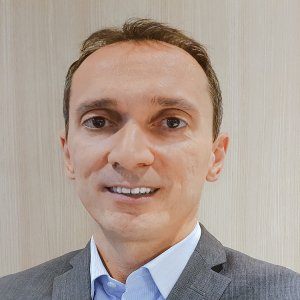


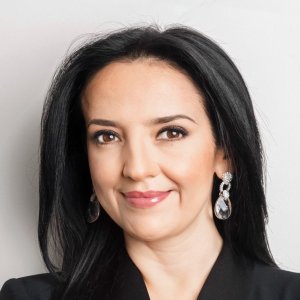
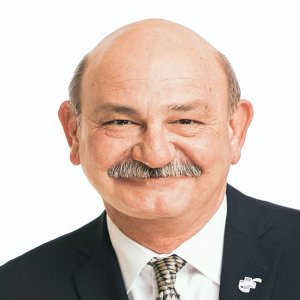
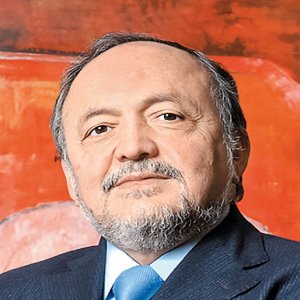
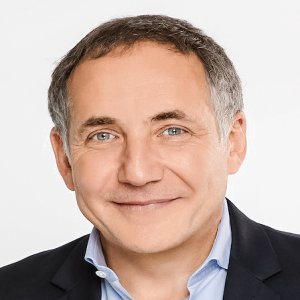
 By Miriam Bello | Senior Journalist and Industry Analyst -
Wed, 07/15/2020 - 12:45
By Miriam Bello | Senior Journalist and Industry Analyst -
Wed, 07/15/2020 - 12:45
















